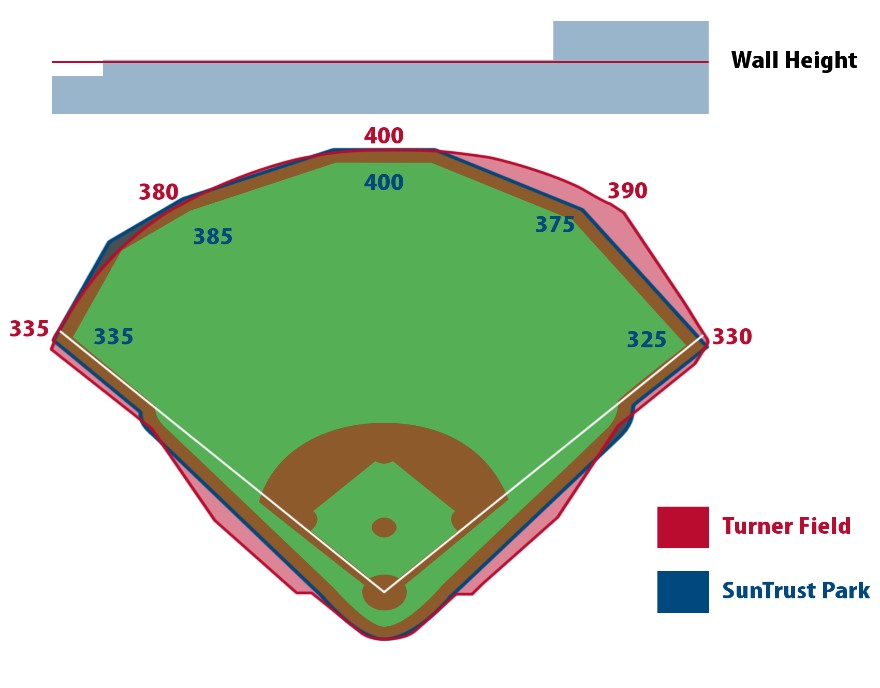| Age: | 27 |
| Bats/Throws: | R/R |
| Height/Weight: | 6'2", 205 lbs |
| Position: | Starting Pitcher |
Will the real Julio Teheran please stand up? Is the Braves’ two-time All-Star, who struggled wildly (5.86 ERA) at Atlanta’s SunTrust Park during its inaugural season of 2017, a legitimate asset or an unpredictable risk heading into upcoming fantasy drafts. Well, of his first five full MLB seasons, Teheran has been the former in three of them (2013, 2014, 2016), and the latter in the other two (2015, 2017). Seeing as how his two weaker seasons have come over the past three years, it is understandable that early ADP numbers have him just inside the Top-100 pitchers (RP included) and Top-250 players overall.
Coming off a strong 2016 campaign that saw him post a 3.21 ERA, 1.05 WHIP and 8.0 K/9 across 188.0 innings, the idea of selecting Teheran as a steady fourth, maybe even third, starting hurler in a standard format last season was quite logical. However, after a few solid outings out of the gate, things quickly took a turn for the worst, as it became abundantly clear that the Braves’ new stadium was anything but home sweet home for their “ace”.
Teheran surrendered an absurd nine home runs over his first 30.0 innings at SunTrust Park, and by early-June, he could be found floating around the waiver wire in most leagues due to a 5.40 ERA and 1.51 WHIP through 12 starts.
From that point forward, Teheran did begin to figure some things out and at least resemble his past form, as he turned in a 3.99 ERA with 13 quality starts across 20 outings. Built into those numbers, perhaps most importantly as the still young righty tries to get more comfortable in his age 27 season, is a 2.84 ERA and only a couple of long balls in his last 25.1 innings at home. Rather or not he can build from there will determine his fantasy viability in 2018, but that late-season improvement was based, at least in part, on plain better luck, as Teheran led all of baseball in “just enough” homers according to ESPN’s Home Run Tracker.
The first thing Teheran must do is solve left-handed batters, particularly powerful ones, which have riddled him basically throughout his career. Although, never so much as they did at home in 2017. The opposition rocked Teheran to the tune of a .927 OPS with 12 homers from the left-side of the plate at SunTrust last season. For comparison’s sake, lefties had a 45.8 percent flyball rate and a not great, but not catastrophic, 12.7 percent HR/FB rate against Teheran at Turner Field in 2016. Last year, they produced only a 38.1 percent flyball rate, but a ridiculous 21.4 percent HR/FB rate versus the righty in Atlanta.
To repeat, the “just enough” category of long balls severely hindered Teheran in 2017, and that HR/FB vs. LHB at SunTrust Park is a prime indicator of that. Let’s be honest, a “juiced” ball is not helping him either. Take a look at Teheran’s spray charts (FanGraphs.com) at home from the past two seasons. It is easy to see how Turner Field aided Teheran in 2016, and how SunTrust Park hurt him last year.



Suffice it to say, Teheran got a little shell shocked by not having his much more spacious home of the past to protect him. It is indeed encouraging for the Braves, and maybe would-be fantasy owners to a lesser extent, that he made some positive adjustments as 2017 progressed. Nevertheless, given the negative splits from his first foray into SunTrust Park, it’s quite difficult to imagine a return to prominence for him so long as he calls Atlanta home.
Another negative that seemed directly related to the home-run spike for Teheran was a career-worst 3.4 BB/9 last season. As his pitches continued to be launched into the seats, he understandably became less confident in attacking the zone. A career-low K/9 can be attributed to that development as well.
Teheran did induce weaker contact on average in 2017, but if he continues a transition toward pitching to contact, that could further decrease his fantasy appeal while actually making him a better overall performer for the Braves. He simply does not possess the stuff to overpower most hitters, as his average heater sat at 91.4 mph last season. Teheran needs to find a way to get more ground balls, and a career-high 40.0 percent rate from 2017 certainly suggests that he is already making efforts to do so.
For mixed leagues this year, Teheran is best viewed as a matchup and venue-based option. It is more than reasonable to believe that he can deliver a mid-3.00s ERA with a decent K-rate for fantasy owners that deploy him properly in 20-25 starts. But those blowups are likely to come, probably against lefty-laden lineups in Atlanta, and no one wants to be around when they do.
To answer our original question pertaining to who Teheran actually is at this juncture of his career, the safe bet is that he’s squarely between the pitcher from 2016 and the one that finished 2017 with a 4,49 ERA, 1.37 WHIP and 7.2 K/9 across 188.1 frames.


 Julio Teheran
Julio Teheran